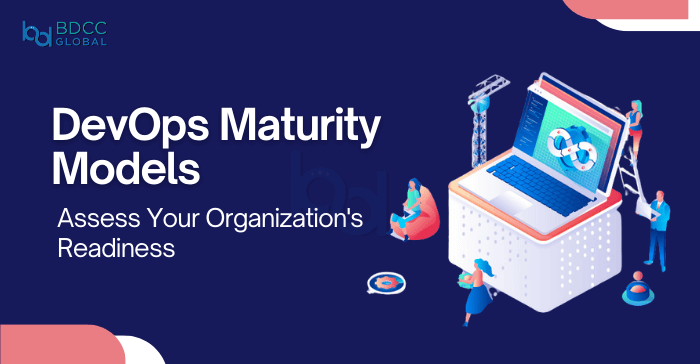
In today’s tech-driven economy, rapid, reliable software delivery is no longer a luxury—it’s a necessity. Whether you’re a startup trying to scale or a large enterprise managing complex digital ecosystems, DevOps has likely entered your strategy discussions. But the critical question remains: How mature is your DevOps practice?
The DevOps Maturity Model offers a structured way to evaluate your organization’s current DevOps capabilities and understand the steps required to grow. It provides clarity in a space that often feels chaotic—especially when scaling processes across teams.
This article breaks down everything you need to know about DevOps maturity: what it is, why it matters, how to assess it, and most importantly, how to use it to drive business and technical growth.
What Is a DevOps Maturity Model?
A DevOps Maturity Model is a framework that evaluates how effectively an organization is applying DevOps principles across critical areas. It helps teams identify gaps, define a roadmap, and track progress toward more efficient, secure, and scalable software delivery.
Rather than offering a pass/fail metric, maturity models aim to answer: Where are we now, and how can we improve?
Also read about the Steps to Balance Agility and Security in DevSecOps.
Core Areas Assessed in a DevOps Maturity Model
- Culture & Collaboration – Are development and operations working as one team?
- Automation & Tooling – To what extent are builds, tests, and deployments automated?
- Continuous Integration/Delivery (CI/CD) – Are changes integrated frequently and deployed quickly?
- Monitoring & Feedback – How well is production feedback captured and acted upon?
- Security (DevSecOps) – Are security practices embedded early in the development cycle?
- Testing & Quality Assurance – Is automated testing integrated into CI/CD?
Why DevOps Maturity Matters
-
Aligns IT With Business Objectives
Higher DevOps maturity ensures IT is tightly aligned with business goals. From reducing time-to-market to responding faster to customer demands, mature DevOps practices directly impact business agility.
-
Identifies Bottlenecks
A structured DevOps assessment helps uncover pain points—whether it’s slow deployments, fragmented tooling, or poor communication between teams.
-
Drives DevOps Transformation
Knowing your maturity level gives you a baseline to measure improvement. It helps prioritize investments in automation, cloud-native tools, and cross-functional training.
-
Boosts Developer Productivity
High maturity environments reduce friction for developers by providing faster feedback, cleaner code merges, and more stable production environments.
The 5 Stages of DevOps Maturity
Although different models exist, most follow a five-stage progression. Let’s look at these stages in depth:
Stage 1: Initial (Ad-hoc or Reactive)
- Characteristics: Manual processes, siloed teams, unpredictable releases.
- Impact: Frequent outages, firefighting, low deployment frequency.
- Common Pitfalls: Lack of standardized tooling, no CI/CD, minimal monitoring.
At this stage, DevOps is mostly aspirational. Teams may deploy to production manually and have minimal automation. Business leaders often experience slow time-to-market and unreliable releases.
Stage 2: Managed (Repeatable Processes)
- Characteristics: Some automation, basic CI pipelines, limited collaboration.
- Impact: Slightly improved release cycles, but frequent errors.
- Common Practices: Basic scripting, partial use of source control and CI tools.
Here, the organization recognizes the need for repeatable workflows. CI tools like Jenkins or GitLab may be in use, but deployment is still semi-manual and fragile. Business risks are reduced slightly but not eliminated.
Stage 3: Defined (Standardized & Automated)
- Characteristics: CI/CD pipelines in place, consistent automation across environments.
- Impact: Faster releases, more stable systems, growing trust in DevOps.
- Best Practices Adopted: Infrastructure as Code (IaC), containerization, integration testing.
This is where things start to get interesting. Teams standardize practices, reduce reliance on manual interventions, and start using tools like Terraform, Docker, or Kubernetes. Release cadence improves, and developers spend less time on setup and troubleshooting.
Stage 4: Measured (Data-Driven Decisions)
- Characteristics: System health is monitored in real time, performance data drives change.
- Impact: Proactive issue resolution, continuous feedback loops.
- Tools Used: Prometheus, Grafana, ELK stack, DORA metrics.
At this stage, the organization uses telemetry to optimize performance and resilience. Mean Time to Recovery (MTTR) and deployment frequency are continuously tracked. Developers and stakeholders alike rely on dashboards for insight into release health and business impact.
Stage 5: Optimized (Continuous Improvement)
- Characteristics: Full CI/CD, DevSecOps integration, blameless culture, continuous learning.
- Impact: Predictable, fast releases with near-zero downtime.
- Outcomes: Business agility, developer happiness, customer satisfaction.
Only a few organizations reach this stage—and fewer maintain it consistently. AI/ML for predictive failure detection, chaos engineering, and auto-remediation become standard. These companies treat DevOps not just as a practice but as a cultural norm that drives innovation and business competitiveness.
How to Conduct a DevOps Assessment
Conducting a DevOps assessment is a structured process to map your current practices to a maturity model. Here’s how you can do it:
Step 1: Define the Scope
Decide whether you’re assessing a single team, a business unit, or the entire organization. Smaller scopes often provide more actionable insights.
Step 2: Choose a Maturity Framework
Popular frameworks include:
- DORA (DevOps Research and Assessment) by Google
- CALMS Model (Culture, Automation, Lean, Measurement, Sharing)
- Gartner or Forrester Models
- Custom models tailored to your tech stack or business goals
Step 3: Evaluate Across Key Dimensions
Use surveys, interviews, and metrics (e.g., deployment frequency, lead time, failure rate) to assess your maturity level in each area.
Step 4: Identify Gaps
Highlight areas where your maturity is low, such as missing CI pipelines or poor collaboration between Dev and Ops.
Step 5: Build a Roadmap
Develop a prioritized action plan with short-term wins and long-term initiatives to advance your maturity.
DevOps Best Practices to Elevate Your Maturity
Whether you’re just getting started or looking to optimize further, these practices help build maturity:
Foster a Collaborative Culture
- Break down silos between development, operations, and security.
- Promote shared responsibility for uptime and performance.
Automate Intelligently
- Focus first on repetitive tasks like builds and deployments.
- Use Infrastructure as Code to automate environment provisioning.
Embrace “Shift Left” Strategies
- Integrate security and testing early in the development lifecycle.
- Reduce time and cost by catching issues before production.
Invest in Observability
- Go beyond logging—implement metrics, tracing, and alerting.
- Use observability tools to monitor user behavior and system performance.
Establish Feedback Loops
- Encourage regular retrospectives and blameless postmortems.
- Collect and act on customer feedback to refine features.
Where Do Business Owners Fit In?
For Business Leaders
- ROI Focus: Mature DevOps leads to faster releases, fewer outages, and better user experiences—directly impacting revenue.
- Risk Management: A mature pipeline reduces business risk by making releases predictable and resilient.
- Competitive Edge: Rapid iteration and customer feedback adoption help businesses stay ahead.
For Developers and Teams
- Better Workflows: Developers spend more time coding, less time firefighting.
- Higher Morale: Stable systems and reliable tooling improve job satisfaction.
- Skill Growth: Exposure to best practices and modern tools helps career development.
Final Thoughts: Where Do You Stand?
DevOps is not a destination—it’s a continuous journey of refining how your teams build, test, release, and operate software. The DevOps Maturity Model helps you see the big picture, identify what’s working, and prioritize what comes next.
Take a moment to reflect:
- Are your releases fast, frequent, and reliable?
- Is automation helping or still a bottleneck?
- Do teams collaborate smoothly or still work in silos?
- Are you measuring what matters—or working on assumptions?
Answering these honestly can be the first step toward real transformation.
Start Your DevOps Maturity Journey Today
Whether you’re just beginning your DevOps adoption or looking to fine-tune a mature pipeline, understanding your current maturity level is the key to progress. Use this model as a guide to assess, align, and grow.
Start small, stay consistent, and keep moving forward—because in DevOps, evolution is everything.

